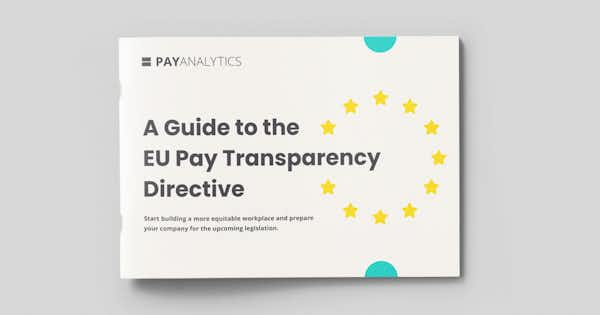Cómo prepararse para la Directiva europea sobre transparencia salarial | Obtén nuestro E-book gratis
#58 - Introducing Structured Pay Equity Analysis
The pay gap is a well-known problem—but Margrét and her research collaborators are always looking for better ways to solve it. This week, Margrét tells Henrike about her new article in the Harvard Business Review. Written with PayAnalytics co-founder David Anderson and research partner David Gaddis Ross, the article describes a fresh and more effective approach to closing the pay gap.
Structured pay equity analysis: A better way to close the pay gap
The problem: A persistent pay gap
Despite decades of increasing awareness, demographic minorities, especially women and people of color, are still consistently underpaid. This is the case even when we measure the equal pay gap, which accounts for factors like experience and responsibilities.
And even good-faith attempts to eliminate pay gaps can fail. This is especially true when organizations run a pay equity analysis and then give corrective raises to the employees who, given their experience, qualifications, and other relevant factors, are still underpaid. (These employees are called the “negative outliers.”)
At first glance, it seems like giving raises to those negative outliers should close the gap. After all, if we look at a pay graph of employees with similar jobs, those raises make it so that everyone is in the pay range or pay band where they should be.
But Margrét’s team has observed that women and demographic minorities tend to get stuck in the middle of their pay band or lower—meaning that they make about what they would be expected to make, or less. It’s common for more than half of women in a company—but less than half of the men—to be in the bottom half of their pay band.
So, as Margrét says, “even if you correct pay for the negative outliers, you may still have systematic bias.”
How can you eliminate systematic bias and close the gap?
The solution is structured pay equity analysis. This approach finds the source of the pay gap and it addresses the systematic bias. Rather than simply identifying pay bands and looking for outliers, this approach looks at factors like department, experience, and performance to find the source of the problem.
For example, it might find that the pay of women in sales is evenly distributed across the sales pay band, but women in management are mostly stuck in the bottom of the management pay band. Or it might find that top-performing women are paid relatively less than top-performing men.
Watch or listen to the coffee talk for the full conversation, and read the article for a more in-depth explanation of structured pay equity analysis. We’ve also put together a quick-start guide to pay equity analysis and a more in-depth guide as well. Feel free to contact us if you’d like to talk about how we can help your organization close the pay gap.
Friday Coffee Talk from Planet Fair is a podcast/videocast series co-hosted by PayAnalytics founder Margrét Bjarnadóttir and Henrike Von Platen, founder and CEO of the FPI Fair Pay Innovation Lab in Berlin. It is available through all podcast platforms as well as on YouTube as a videocast.


